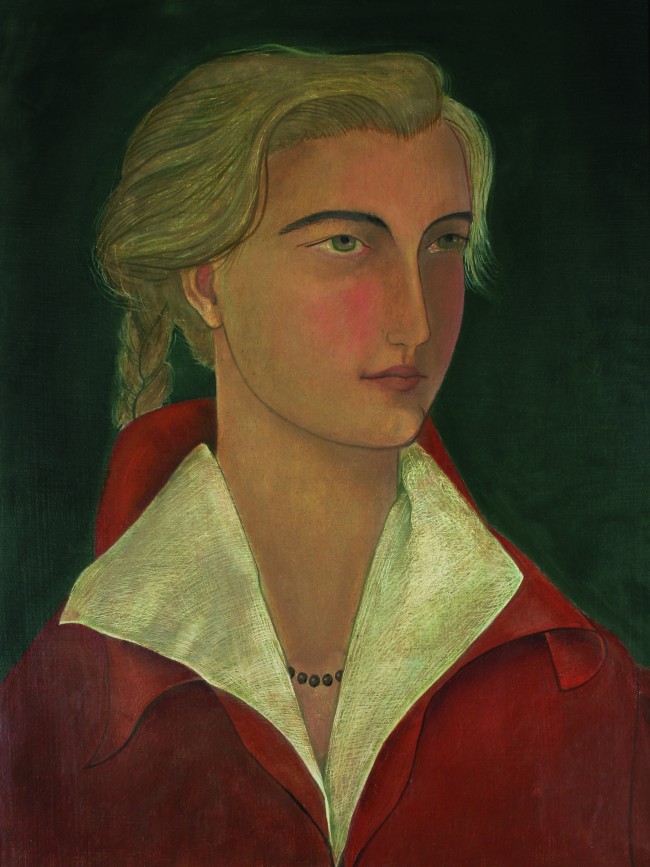Mädchenbildnis (Denise) (Detail), 1951
Eitempera und Harzfarbenlasur auf Baumwolle auf Sperrholz aufgeleimgt
Tempera on cotton, mounted on ply wood
40 x 29 cm
Sammlung Denise Gertsch
Collection Denise Gertsch
© Franz Gertsch
Franz Gertsch
Works on paper
04.07.2008 – 26.10.2008
From early on, Franz Gertsch (born 1930) possessed true talent and fine expressive potentials. That he could draw, paint, and make woodcuts with equal precision and sensitivity is exemplarily documented by three different versions (not shown here) – a pencil drawing, painting, and woodcut – of the Portrait of a Girl (Denise) from 1951. The drawings now assembled from the artist’s collection are all the more surprising. A still rather unfamiliar side of Franz Gertsch comes to light in their openness and yet simultaneous agitation.
Drawing does not appear as a medium of isolation or appropriation, but rather as a means to approach and depict the still incarnate. While one continues to encounter a linear "script," as was earlier the case in the nineteen fifties, stylization and configuration have been rejected for the most part.
The approach is open, expansive, and two-dimensional. Much allows one to assume that Gertsch only jotted down brief free-hand notes, as yet without a “tonal key, in order to indicate a sur-face, to suggest a contour, or to encircle a still developing pictorial idea. The painter still seems very far removed from the pictorial materialization.
The pencil is silvery here, weightless, and reserved; the cadences of the drawing style make a restless, sketch-like, even ephemeral impression; the ink of the brush drawing shows itself robust and somewhat expressionistic. Stylistically, the drawings are not all the same; they were made at different times, even though it is difficult to date most of them. But one is inclined to see them as statements from the final phase of the existential hardship and creative crisis that the artist lived through between 1956 and 1962.
The works on paper exhibited here for the first time go autonomously and compellingly beyond the usual early work of an artist. They can perhaps provide a glimpse at the artist’s “workshop of that time as well as his world of thought. The thematic selection is intended to show how Franz Gertsch, despite all coarseness, again and again took up and refined the shaping of form, and was never easily satisfied with that what was achieved.
Like a chronicler of past times, he moved about almost romantically in a world of sagas and fairy tales. In the process, literary texts such as Die Gründung Burgdorfs oder Die beiden Brüder Sintram und Bertram by Jeremias Gotthelf (1797–1854) in addition to contemporary films like Jean Cocteau’s (1889–1963) La belle et la bête (1945), Orphée (1950) and Le testament d’Orphée (1959) nurtured his imaginative powers.
Only later did Franz Gertsch sovereignly find his way from a certain other-worldliness to the internalization of a demanding objective reality well-known by connoisseurs.
[rmm]

